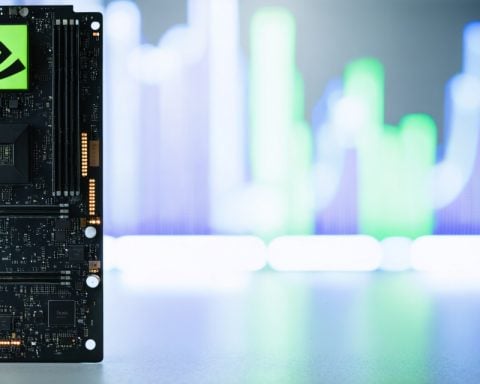- The U.S. government is dismantling its EV charging network, deemed “non-essential” by the General Services Administration (GSA).
- This decision marks a shift from the previous administration’s push for federal fleet electrification.
- EV chargers supporting government and personal use are being closed nationwide, halting energy-efficient initiatives under the Inflation Reduction Act.
- Questions arise about the future of electric vehicles purchased under President Biden, as their fate remains uncertain.
- Under President Trump, a $5 billion EV charging initiative is unplugged, and incentives for EV acquisition are rolled back.
- This stark policy change raises concerns over the future of clean energy mobility in the federal government.
A wave of change sweeps through the nation’s capital, as the U.S. government makes a startling move to dismantle its electric vehicle (EV) charging network. The General Services Administration (GSA) has begun shuttering hundreds of EV charging stations nationwide, deeming them “non-essential” for their mission. This surprising pivot signals a sharp departure from the previous administration’s electrifying ambitions, which sought to pave a cleaner path by converting federal fleets from gasoline to electric.
In offices across the country, chargers that powered government vehicles and personal EVs of federal employees are flickering off. The endeavor to blanket federal buildings with energy-efficient infrastructure, backed by the Inflation Reduction Act’s hefty financial support, now winds down. With contracts being canceled almost overnight, dormant stations stand as silent witnesses to an initiative cut short.
As these charging stations go dark, questions swirl around the fate of the thousands of electric vehicles purchased with great enthusiasm under President Biden’s leadership. The GSA, once poised to lead a green revolution with tens of thousands of EVs and charging ports, now plans to relinquish these assets, though their ultimate destiny—sale or storage—remains shrouded in uncertainty.
Guiding this shift is a new administration under the helm of President Trump, who has swiftly unplugged a $5 billion public EV charging initiative and rolled back incentives linked to EV acquisition. His government’s chilly stance on electric vehicles marks a stark departure from the previous playbook and raises questions about the future of clean energy mobility in the federal sphere.
As the federal government’s green transition stalls, stakeholders and citizens alike watch with bated breath. The once-bright trajectory toward an eco-friendlier future flickers, dimming hopes of a swift return to sustainable federal transport.
The Hidden Consequences of Shutting Down Federal EV Charging Stations
Understanding the Real-World Impact and Future of EV Infrastructure
The U.S. government’s recent decision to dismantle its electric vehicle (EV) charging network has left many Americans puzzled. This dramatic shift under the new administration could have far-reaching effects. To better understand these implications, let’s explore the potential outcomes in several key areas.
How-To Steps & Life Hacks for Transitioning Without Federal Charging Stations
1. Alternative Charging Solutions: EV drivers, especially federal employees, may need to seek alternative charging options. Consider installing a home EV charger if possible, or use apps like PlugShare and ChargePoint to locate nearby public or private stations.
2. Optimize Charging Habits: Plan your trips and charging times carefully. Charging during off-peak hours can save money and reduce grid strain.
3. Explore Utility Rebate Programs: Some states and electric utilities offer rebates for home charger installations. Check local utility websites for potential savings.
Market Forecasts & Industry Trends
EV industry growth is anticipated to continue despite federal setbacks. The global EV market is projected to grow from $171.26 billion in 2020 to $802.81 billion by 2027, according to Allied Market Research. Private sector advancements in charging infrastructure and state-level initiatives are expected to offset federal reductions.
Reviews & Comparisons of Alternative EV Charging Networks
While the federal network diminishes, other networks, such as Tesla’s Supercharger and Electrify America, continue to expand. Tesla offers fast, reliable charging for its vehicles, while Electrify America provides broad compatibility with many EVs. Look for versatility in connectors and pricing when choosing an alternative network.
Controversies & Limitations
The move has sparked controversy, with critics arguing it sets back U.S. progress toward reducing carbon emissions. Notably, climate experts like those at MIT emphasize that reducing support for EV infrastructure could hamper efforts to achieve environmental targets.
Features, Specs & Pricing of Leading Chargers
Home chargers, such as the JuiceBox 40 or ChargePoint Home Flex, vary in terms of power output and price. Expect to pay between $500 and $1,200, depending on features like Wi-Fi connectivity and remote management.
Security & Sustainability Concerns
Security remains vital, as hackers could target charging infrastructure. Therefore, opting for chargers from reputable brands with strong cybersecurity measures is advisable. Sustainable practices include using solar-powered chargers or accessing renewable energy programs offered by utilities.
Insights & Predictions for the EV Future
Despite federal cutbacks, consumer demand and environmental goals suggest continued development in EV technologies. BloombergNEF forecasts that EVs will comprise 58% of global passenger car sales by 2040.
Pros & Cons Overview
Pros:
– Environmental Benefits: EVs produce zero emissions, reducing pollution.
– Cost Savings: Lower fuel and maintenance costs compared to ICE vehicles.
Cons:
– Charging Infrastructure: Limited federal support might slow infrastructure expansion.
– Initial Cost: Higher upfront costs without federal incentives.
Actionable Recommendations
– Advocate Locally: Urge local governments and organizations to invest in public charging infrastructure.
– Stay Informed: Monitor state policies, as many states continue to support EV adoption independent of federal positions.
– Invest in Home Charging: Reduces dependence on federal or public stations.
Final Thoughts
While the federal government winds down its EV charging ambitions, staying informed and prepared ensures citizens can still pursue electric mobility. Maximizing personal charging options and supporting state and private sector initiatives will be key catalysts for continued momentum in the EV movement.
For further resources on sustainable transport and industry developments, visit the U.S. Department of Energy.
By embracing local solutions and personal adaptability, EV users can maintain momentum towards a sustainable future in the face of federal shifts.














